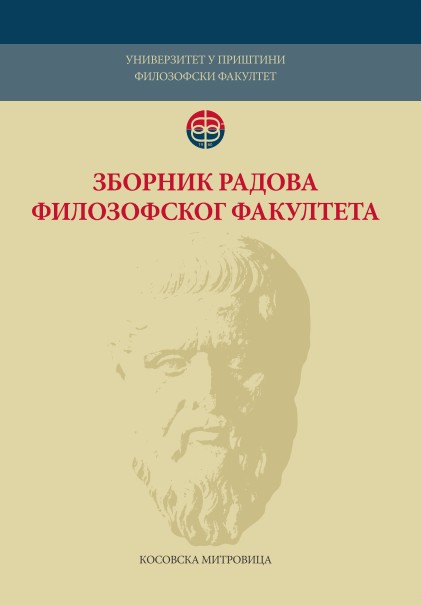Установе културе као носиоци развоја националног идентитета и културног туризма
Cultural Institutions as Carriers of the Development of National Identity and Cultural Tourism
Author(s): Jelena Vukčević, Dejan AntićSubject(s): History, Cultural history, Ethnohistory
Published by: Филозофски факултет, Универзитет у Приштини
Keywords: cultural institutions; cultural tourism; national identity; heritage
Summary/Abstract: The aim of this research is to find a place of the cultural and historical heritage of a certain region in the territory of the Republic of Serbia in the citizens’ conscience mental mapping and to detremine the tourist potential of that heritage. The research was conducted in a multidisciplinary way, through consulting legal acts, relevant literature of recent date and through field research through a survey (398 respondents). The territory of the Raška and Rasina administrative districts was chosen for the research for two reasons: it is the territory that represents the core of the Serbian medieval Nemanjić’s and Laz-arević’ state. Also, it is a territory through which the route of the new highway, the Morava Corridor, will pass in the near future, and further research will be able to follow the economic and tourist development of this particular area after its construction. At the end of the paper, the heritage of Raška and Rasina administrative territory is defined and cultural institutions are emphasized as its bearers. Cultural institutions are regarded, not only as bearers of cultural development of local communities, but also as institutions that are main carriers and guardians of national identity and cultural tourism that can contribute to defining and the preservation of that national identity as well as the economic development and branding of a particular region. By processing the survey data and insight into the legal and strategic regulations of the Republic of Serbia, it was concluded that it is necessary, both at the national and local level, to work on the adoption and implementation of necessary, but lacking, strategies, acts, strengthening culture, cultural institutions and related cultural tourism, and in order to define the national identity of the Sernbian citizens through mapping key identity points. Such a national program can be implemented through cultural institutions, ie protection institutions (in the first place museums), which have been proven to continue to enjoy the trust of citizens. In addition, in today's time of instant culture, Instagram and Facebook history lessons, unverified data and mythologizing of certain historical figures and events, there is a need to strengthen cultural institutions that critically interpret history, culture and heritage, in ways that are adapted to the modern citizen of Serbia. Such institutions do not have as a target audience only organized school groups of children who are brought to local museums by their teachers, their target audience can and must be absolutely every citizen, and that means modernization of outdated permanent exhibitions, ie formation of new ones because there are cases of museum institutions which do not have permanent exhibitions. In that sense, considering the ways in which it is possible to bring the desired audience to museums and other cultural institutions, close cooperation of the museum professionals with local tourist administrations is needed, which are certainly interested in increasing the number of tourists and visitors, and for that, tourist attractions are necessary. In this paper, we have shown, through a survey of nearly 400 respondents, that among the citizens of Serbia there is a great interest in culture, history and heritage which have the potential of tourist attractions. In that sense, for the needs of the research, one administrative - geographical unit of the territory of Raska and Rasina administrative districts has been singled out, through which the route of the Moravian Corridor will pass in the near future. In order to place this territory on the Serbian and European market as a unique tourist destination, it is necessary to bind all existing cultural institutions, local and regional tourist administrations and tourist organizations as well as other interested stakeholders (caterers, hotels, private accommodation, small craftsmen…). One of the ways to connect all participants, ie stakeholders, in a certain territory is through the formation of a Destination Management Organization that would coordinate their work and serve as a link between the Ministries operating at the national level and local city and municipal authorities.
Journal: Зборник радова Филозофског факултета у Приштини
- Issue Year: 51/2021
- Issue No: 1
- Page Range: 237-261
- Page Count: 25
- Language: Serbian

